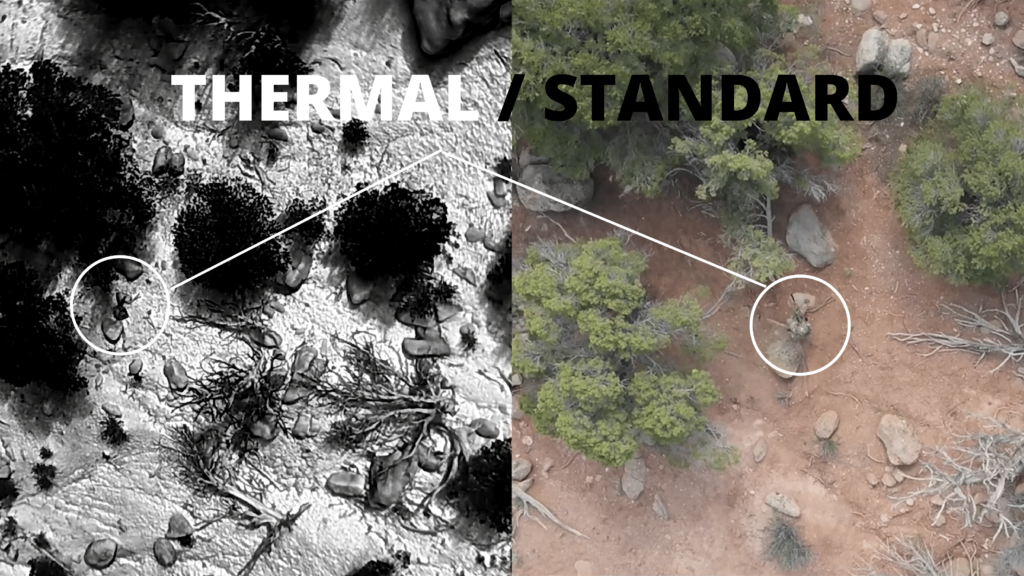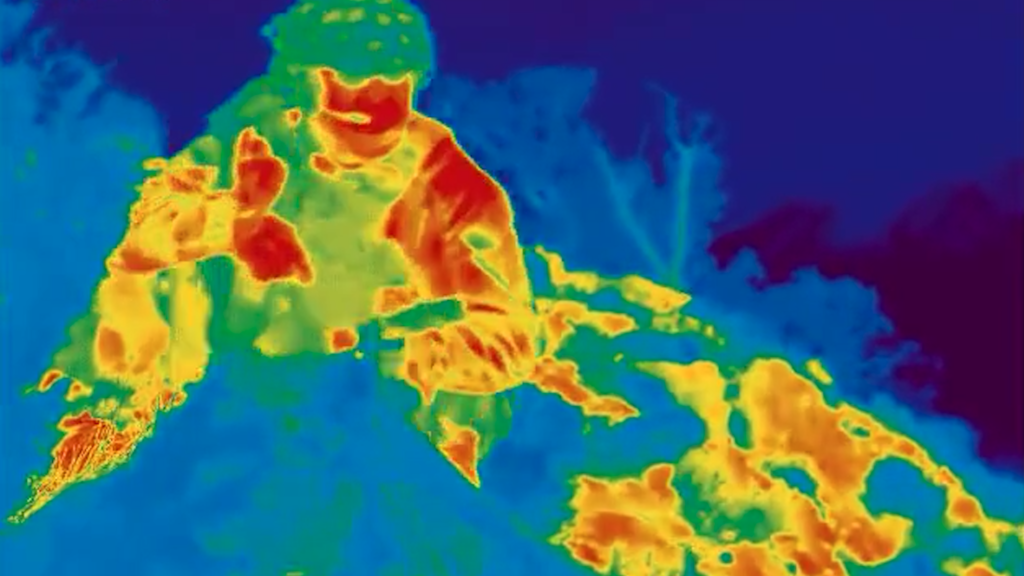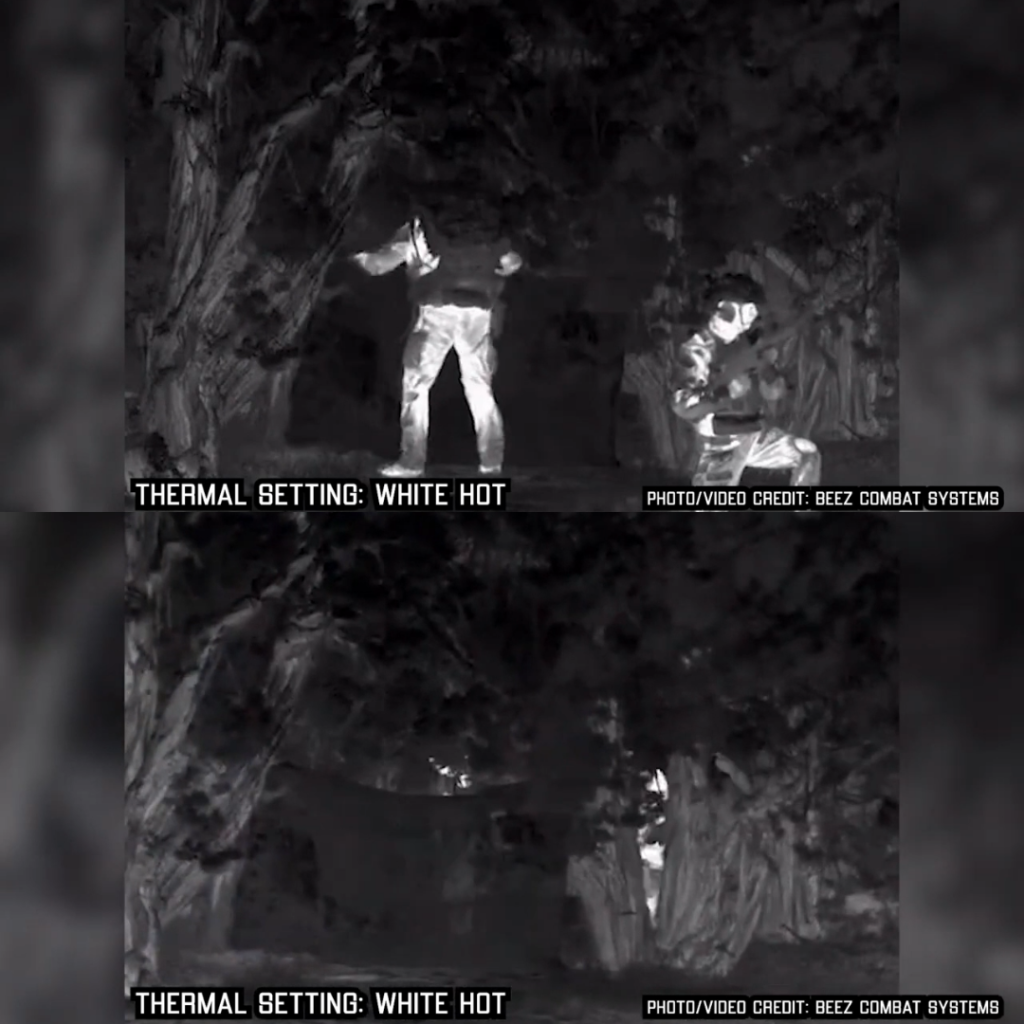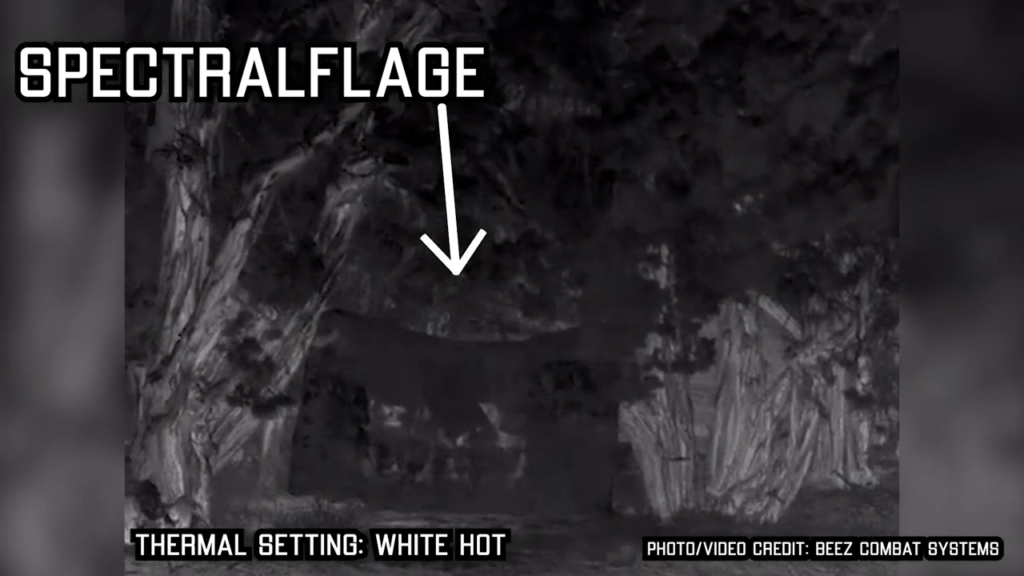How do you make yourself invisible to thermal imaging technology? Understanding how the human body emits heat and how thermal imaging identifies that heat signature is the first step in understanding how to conceal yourself against thermal imaging technology. It’s understood that if an individual places an object between themselves and the thermal imaging sensor that individual can appear “invisible” to that thermal imaging device. This is because depending on the object placed between the individual and the sensor, whether it be the roof of a house or the treetop canopy of a forest, if the thermal energy from that individual doesn’t reach the sensor there is no detection. Unfortunately these objects cannot be utilized as a form of concealment over extended periods of time especially in the modern day battlefield.

When utilizing basic cover and concealment techniques, it is important to know that some objects transfer heat from the individual to itself allowing the thermal imaging device and sensor to detect the thermal energy transfer and heat signature emitting from that individual. Depending on the object this can happen within mere seconds. Reducing, or masking, your thermal signature is the biggest challenge when concealing yourself from thermal imaging devices. In order to thoroughly understand counter thermal and anti thermal technology you must understand some basic factors:
- Thermal Mitigation – Utilizing materials that reduce thermal detection as well as creating enough distance between the individual and the material to prevent thermal energy transfer
- Reducing Thermal Loading – Understanding which materials reduce the amount of time it takes for thermal energy transfer if distance cannot be created
- Breaking Up Thermal Outline – Matching your surroundings is just as important as reducing your thermal signature.

Understanding a thermal imaging device’s “dynamic range” is also extremely important when concealing yourself against thermal imaging technology. In this dynamic range the thermal imaging device assigns a color to each degree of temperature. Commonly the standard view is white equals hot and black equals cold. However, if the overall temperature is relatively close (e.g. between 60 and 70 degrees) then the dynamic range can assign a color for every degree thus providing the observer with an increased ability to detect an individual’s heat signature. Understanding the dynamic range can help the individual to mask their heat signature within environments that experience drastic temperature differences.
To better avoid detection from the observer it is important to break up the thermal outline if the dynamic range cannot be manipulated to obscure the individual’s heat signature. This is especially useful at night. For example, during the night various objects cool down faster than others. This can create the appearance of the individual’s thermal outline to appear colder than that of their surroundings. This is where it becomes crucial to utilize leaves, branches, grass, etc. in order to avoid standing out from thermal imaging technology.


